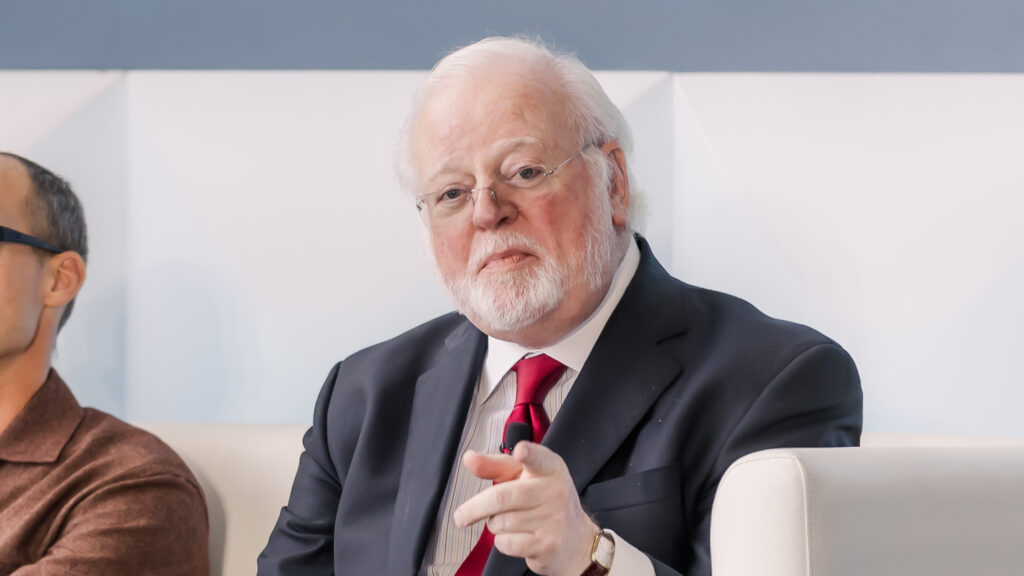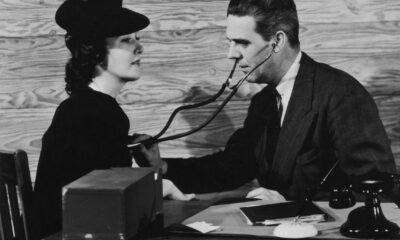Health
Methadone clinics insist on immediate prescribing by doctors

LAS VEGAS – Mark Parrino, longtime leader of the U.S. methadone clinic industry, kicked off his organization’s conference here last week with a simple message: Allowing addiction physicians to prescribe the medication directly to their patients is “not a good idea.”
It was a revealing warning, both in timing and tone. Since founding the American Association for the Treatment of Opioid Dependence, a national advocacy group representing methadone clinics, Parrino has never faced more pressure to radically expand access to the medication. But amid record deaths from opioid overdoses, the clinics are facing calls for reform from major medical groups, politicians and patient advocates, many of whom view the clinics as restrictive, punitive or unwilling to provide patient-centered care.
One legislative proposal in particular stood out as a theme during the conference: a bill from Sen. Ed Markey (D-Mass.), with bipartisan support in the House and Senate, that would remove methadone from the strict control of specialty clinics and would allow any board-certified addiction specialist or addiction psychiatrist to prescribe the medication directly to patients.
“We oppose this legislation,” Parrino said during his remarks at the opening session of the conference. “We have been criticized for it. We think this is the wrong path.”
The meeting of several thousand methadone clinic leaders and staff, which took place approximately every 18 months, discussed a wide range of issues, including the highly toxic U.S. drug supply, the increased use of methamphetamine and cocaine in addition to opioids, and an increase in problem gambling. But even beyond Parrino’s opening salvo on Markey’s bill, much of the conference was explicitly about the implications of that proposal, or the shaky political foundation of methadone clinics more broadly.
The title of the conference – “So much more than medication” – reflected the rhetoric of “Program, not a pill,” an ongoing lobbying campaign funded by AATOD and several for-profit methadone clinics. The advocacy is explicitly intended to combat efforts to make methadone available outside the context of specialty methadone clinics, also known as opioid treatment programs or OTPs.
Despite the focus on perceived threats from Capitol Hill, numerous presenters and attendees acknowledged the changing landscape and welcomed clinics’ recent efforts to better meet patient needs. One speaker described the entire meeting as “an opportunity to rethink healthcare.” But just as often, the sessions focused on defending the status quo — at least when it comes to whether methadone should be prescribed by doctors and dispensed by pharmacies, like almost all medications.
One, titled “MAT Advocacy in an Evolving Political Landscape,” focused extensively on the legislation, which clinic representatives have warned would cause an increase in methadone-related overdoses. Much of methadone’s effectiveness stems from the fact that it is itself an opioid and, when administered properly, can help heroin or fentanyl users quit illicit drug use, maintain clarity of mind and avoid painful avoid withdrawal symptoms.
Methadone is seen as a crucial part of the U.S. response to the addiction crisis, especially as opioid deaths exceed 80,000 annually. People who use methadone do 59% less likely die from an opioid overdose than those who don’t use medications. However, for all the lives it saves, methadone also contributes to more than 3,000 overdose deaths each year, although it is unclear what proportion of those also involve drugs like fentanyl, and which deaths result from methadone use as an addiction treatment, as opposed to prescribed methadone. for pain.
Jason Kletter, the president of BayMark Health Services, a large for-profit clinic chain and chairman of AATOD’s legislative committee, complained during the session that politicians and medical groups such as the American Society of Addiction Medicine are increasingly challenging the historically restrictive culture of clinics. blame for the poor results of drug treatment in the country.
“Unfortunately, instead of those people recognizing the great work that OTPs have done over the last fifty years and the hundreds of thousands or millions of patients who have benefited from OTPS… to this day we hear a lot of criticism instead, how sad and is unhappy. ” he said.
Ed Long, a contract lobbyist representing AATOD in Washington, also spoke at the session, accusing politicians of seeking a “quick fix” and offering guidance on how methadone clinic officials can most effectively lobby their representatives in Congress.
“The No. 1 question,” Long said, “is [to] oppose the Modernization of the Access to Opioid Treatment Act.”
However, not all leaders in the methadone clinic industry are on the same page. Nick Stavros, the CEO of fast-growing Community Medical Services, has said he is open to a system in which methadone is prescribed by doctors and dispensed by pharmacies. Some addiction doctors, such as Ruth Potee, the medical director of several OTPs in western Massachusetts, have become leading advocates not only of methadone clinic reform, but also of allowing doctors to prescribe the medication directly to patients.
During the conference, AATOD leaders and other prominent speakers – including right-wing megadonor, physician and addiction researcher Miriam Adelson – specifically extolled the virtues of methadone clinics, which they say entails a comprehensive approach to recovery that includes medication, counseling, peer rehabilitation. support, drug testing and other services.
Recently, however, patient groups have argued that requiring these services in addition to medication may be more harmful than helpful in some cases. And in the wake of the Covid-19 pandemic, when emergency regulations led many clinics to spend weeks handing out “take-home” medications instead of requiring patients to visit in person every day, the culture has shifted significantly toward flexibility and liberalization .
In April, the Substance Abuse and Mental Health Services Administration codified the flexibility, including take-home medications. It also warned against using drug testing “punitively” – in other words, punishing patients who do not immediately achieve complete abstinence.
Yngvild Olsen, a top SAMHSA official and former medical director of the methadone clinic, called for an industry-wide “culture change” during his speech at the conference’s opening session, even appearing to admonish providers whose practices remain restrictive, inflexible or punitive.
“Some of it will require money, some of it will require regulatory changes,” Olsen said. “But part of that is also so we can be kind to our patients, and that doesn’t take a lot of time. And we can trust our patients. We can talk to them, we can understand who they are as people, and work with them to foster that trust and recovery.”
While the new regulations allow for more flexibility than ever, it remains unclear whether patients will actually benefit. Methadone clinics are also even more heavily regulated at the state level, and even in states where regulations are not a barrier, the patient experience is often shaped by the culture of individual clinics.
Moreover, many leading lawmakers appear to view the regulations as inadequate. Rep. Don Norcross (DN.J.), a co-author of Markey’s legislation, often refers to the methadone clinic industry as a “cartel.” Markey, meanwhile, has increasingly questioned the role of private equity firms, which a recent STAT investigation found now have ownership stakes in nearly a third of the roughly 2,000 clinics nationwide.
The scale and political influence of the methadone industry was on full display in the exhibit halls of the Planet Hollywood Resort & Casino, located on the Las Vegas Strip – perhaps an unexpected location for a conference on addiction and substance use, and the subject of frequent jokes. the week.
Multiple officials from both SAMHSA and the Drug Enforcement Administration gave presentations at the conference. SAMHSA and the National Institute on Drug Abuse, the federal research agency, received special mention on the list of conference sponsors.
Promotional booths include advertisements for several for-profit methadone clinic chains, a high-tech robotic system used to fill and track methadone doses, administrative software, billing services, a virtual interface for monitoring patients as they take their doses at home, custom-designed bottles for storing take-home methadone doses, molecular drug tests, high-dose naloxone products and more.
A large majority of the companies in attendance appeared to sell exclusively to methadone clinics, which have become big business as the opioid crisis has accelerated.
Last year, Acadia Healthcare, the nation’s largest OTP chain, reported about $500 million in revenue from its more than 150 methadone clinics across the country. Although it was once privately held and backed by private equity firms, Acadia has since gone public, making it the only major clinic chain required to publicly report earnings.
Given the financial implications of eliminating clinics’ exclusive right to prescribe methadone, many critics have accused AATOD and clinic chains of putting profits before patients. While industry leaders like Kletter and Parrino have dismissed these claims, there is little doubt that passage of Markey’s legislation or a similar proposal would create a stir in the world of methadone treatment.
At one point during the political advocacy presentation, a participant stood up to ask whether AATOD had a plan in place if addiction doctors were given direct privileges to prescribe methadone. Kletter acknowledged that no such plan existed.
Another audience member then stood up to offer, in his words, a different perspective. Although he called Markey’s bill a “disaster,” he argued that the methadone clinic industry bears much of the blame for the current political climate.
“Look in the mirror: we can do things better,” he said. “We need to be more involved with our patients. We have to love them.”
The crowded room of several hundred people burst into applause. And with that the session was over.
STAT’s coverage of chronic health conditions is supported by a grant from Bloomberg Philanthropies. Us financial supporters are not involved in decisions about our journalism.













